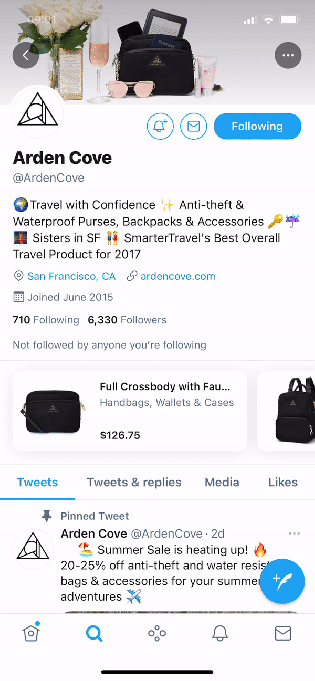Cary Breese is the CEO and co-founder of
NowRx, a digital retail pharmacy.
We have entered a whole new era of e-commerce centered on speed and convenience. Business leaders are being forced to prioritize delivery capabilities and push for more accelerated delivery services.
“Fast/reliable delivery” was the most important online shopping attribute among the more than 8,500 consumers queried for PwC’s June 2021 Global Consumer Insights Pulse Survey, making it clear that delivery services will only become more crucial across the e-commerce landscape.
Now that consumers have grown accustomed to same-day (and same-hour) delivery service models, customer expectations for delivery options will only increase.
In fact, according to a recent report from the mobile app intelligence platform SensorTower, the top food delivery apps saw continued growth in January and February 2021, with installs up 14% year over year. And yet, despite climbing user growth, DoorDash, Uber Eats and GrubHub remain unprofitable. So how can business leaders design rapid delivery models that meet consumer expectations — and still make money?
If your delivery service results in a poor customer experience, you’ll be less likely to win customer loyalty just because you offer faster delivery.
The challenge: Delivery apps need more than speed to drive profitability
To remain competitive, delivery apps are rethinking their services and broadening their offerings.
“Amazon powers next-day delivery,” Raj Beri, Uber’s global head of grocery and new verticals, said in May. “We’re going to power next-hour commerce.”
But speeding up the delivery process won’t necessarily drive revenue. More importantly, if your delivery service results in a poor customer experience, you’ll be less likely to win customer loyalty just because you offer faster delivery.
The primary challenge faced by delivery apps, or any e-commerce company looking to add delivery services as part of its offerings, is building a foundation that enables not only speed and convenience for the customer, but one that takes into account all aspects of the customer experience. For example, when delivering food, the business responsible for the delivery must make sure the food is handled safely and remain free of any contaminants. The temperature — whether hot or cold — must be maintained throughout the delivery process and the order itself must be correct.
The solution: Same-day delivery relies on sophisticated technology platforms
The “Uberization” of everything, combined with dramatically elevated consumer expectations, will take much more than a delivery app and fleet of drivers for businesses to be profitable. To follow through on the promise of same-day delivery services, a number of things need to happen without any missteps between when an order is placed and when it shows up at the customer’s door. The more complex the product being delivered, the more difficult the delivery process becomes.
To enable same-day delivery services while also reaching profitability, a delivery app must take into account the technology needed to meet customer expectations. It involves much more than simply designing an app and growing user numbers. A truly successful same-day delivery model that provides an exceptional customer experience relies on a sophisticated software platform that can simultaneously manage various aspects of the customer journey, all while making it appear seamless from the customer’s point of view.
Profitable delivery services are built on automated systems powered by artificial intelligence systems and robotics. The technology must come first, before the app and before user growth. Any other delivery business model is putting the cart before the horse.
Domino’s Pizza is a brand that has perfected the delivery process and vastly improved the overall customer experience by making technology core to their business model. The key moment came when the brand defined itself as an e-commerce company that sells pizza. It committed to data applications and implemented a robotics technology platform that enabled electronic delivery systems that added speed and efficiency to the delivery process. In April, Domino’s began rolling out a robot car delivery service to select customers in Houston via Nuro.
GrubHub is also taking steps to integrate robotic capabilities into its delivery process. According to recent reports, the company announced it would be adding self-driving units that deploy drone-like robots to deliver food to college students. The program, which will roll out on a limited number of U.S. college campuses this fall, aims to reduce delivery times and, hopefully, costs.
This focus on technology is crucial in the world of delivery apps, or for any businesses forced to compete in the newly emerging category of next-hour commerce. The key to building a successful, profitable business model is to invest in technology platforms that can connect all components of the customer journey, from opening an app and clicking on a product to purchasing the product and scheduling the delivery, and beyond.
Same-day delivery: Where to go from here
In a world where everyone wants to open an app on their phone and have whatever it is they need to be delivered within an hour, it’s tempting for business leaders to focus on the delivery app itself, whether they are building their own or partnering with another company. But focusing on the app is a shortsighted view of same-day delivery models.
Instead, business leaders must use a wide-angle lens and consider every single aspect of their customer journey: How do customers engage with their business? How do customers search for and find the products they offer? What does it take to complete an order and what conditions must be met before the order can be delivered? Also, what happens after the order to ensure it went smoothly and to the customer’s satisfaction?
Some businesses are finding success partnering with delivery apps, but this comes with the risk of putting your brand’s reputation in the hands of another company that acts as a frontline employee with customers. Other companies are adding delivery service options to their current e-commerce model, relying on third-party software that can be plugged into an existing technology stack. Unfortunately, this comes with limitations and is not viable for regulated businesses that include multiple components.
The only way to ensure a seamless customer experience on top of same-day delivery services is to build a proprietary software platform that puts the technology at the heart of your business, which allows you to automate key processes, adding speed and convenience to your delivery model. It also makes it possible to integrate robotic systems that can expedite orders, include artificial intelligence protocols that can accelerate business growth, and scale your delivery model as your business expands.
Thriving in the new era of e-commerce
“Next-hour delivery” is a catchy tagline that is sure to gain traction among consumers, but whether it will help drive profitability remains to be seen. As the CEO of a firm that has built a profitable business model centered on same-day delivery services, I’m skeptical that the promise of next-hour delivery will drive more revenue if the technology powering the delivery systems lacks automation, artificial intelligence and robotics.
It’s true that businesses will be forced to compete on same-day delivery. But another truth that has emerged since the pandemic is that this new era of e-commerce comes with heightened customer expectations that won’t be met on speed alone. Consumer satisfaction hinges on more than the amount of time it takes to move an order from an app to the customer’s door.
To succeed in the delivery service market, business leaders must ask themselves a number of questions: Which parts of their business are needed to complete a same-day delivery order? Is the ordering process intuitive? Can the order and delivery be monitored by the customer? Is the order correct when it arrives? Does it meet the customer’s expectations?
And, most importantly, is their business built on a technology platform that can support the entire customer journey and delivery model, from product discovery and purchase to same-day delivery and beyond? The businesses that answer yes to these questions are the ones I expect to thrive in the post-pandemic world.

from eCommerce – TechCrunch https://ift.tt/373bnjB

via
IFTTT
 from eCommerce – TechCrunch https://ift.tt/3BQs8g6
from eCommerce – TechCrunch https://ift.tt/3BQs8g6 via IFTTT
via IFTTT






 Hassan Mikail, head of
Hassan Mikail, head of 


